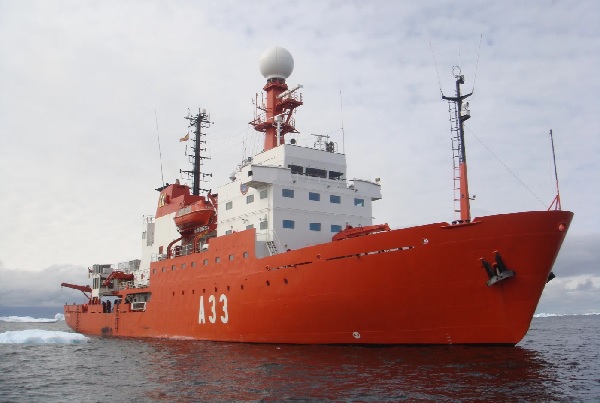TRANSMOW campaign to analyse circulation of Mediterranean outflow waters with new geochemical tracers

Finding the signature of past climate transitions in the Mediterranean using the analysis of innovative geochemical tracers -specifically, isotopes of neodymium and rare-earth distribution- is the objective of the oceanographic campaign TRANSMOW, led by the experts Leopoldo Pena and Jaime Frigola, members of the consolidated Research Group on Marine Geosciences of the Faculty of Earth Sciences of the UB.

Finding the signature of past climate transitions in the Mediterranean using the analysis of innovative geochemical tracers -specifically, isotopes of neodymium and rare-earth distribution- is the objective of the oceanographic campaign TRANSMOW, led by the experts Leopoldo Pena and Jaime Frigola, members of the consolidated Research Group on Marine Geosciences of the Faculty of Earth Sciences of the UB.
The campaign will start at the harbour of Barcelona on April 28, in the oceanographic research vessel (R/V) Hespérides and will finish in Gijón on May 16. Among the participants are teams from the Institute of Marine Sciences (ICM-CSIC), the Centre of Marine Sciences (CCMAR-IPMA, Portugal) and the Royal Holloway University of London (United Kingdom). Also, the National Institute of Marine Sciences (ISMAR) of the National Research Council in Italy (CNR) and ETH Zurich (Switzerland) collaborate with the campaign as well.
Mediterranean outflow waters towards the Atlantic Ocean
The Mediterranean outflow waters is a constant and strong current of warm and saline water masses moving towards the Atlantic Ocean. The properties of this hydrographic connection between both marine basins through the ocean corridor of the Gibraltar Strait are marked by the climate conditions of the Mediterranean region. Nowadays, determining the potential impact of the Mediterranean water mass on the thermo-haline Atlantic circulation system -and ultimately, on the global climatology and oceanography- is still a topic under debate in the scientific community.
TRANSMOW will describe the Mediterranean outflow waters and the circulation flow around the Iberian Peninsula with an innovative methodology. “For the first time, we will apply the analysis of innovative chemical tracers -in particular, isotopes of neodymium and rare-earth elements- to improve the estimation of the MOW mix with Atlantic surrounding waters”, notes Isabel Cacho, professor at the Department of Earth and Ocean Dynamics of the UB, and principal researcher of the projects framed within this oceanographic campaign.
The new methodology will be used thanks to a dual support infrastructure for research at the University of Barcelona: the new Laboratory of Radiogenic and Environmental Isotopes (LIRA) - located in the Faculty of Earth Sciences of the UB, and the multi-collector mass spectrometer PANTHALASA, in the Scientific and Technological Centers of the UB (CCiTUB).
As part of the TRANSMOW campaign, the teams will carry out an intense activity of water sampling -vertical, meridional and longitudinal transects- of the MOW circulation. They also expect to obtain samples from marine surface sediments and long sedimentary sequences that will help them to identify the impact of past climate changes on this Mediterranean water flow. The campaign will also enable researchers to analyse the transfer of the MOW geochemical signature to the oceanic sedimentary record and assess its potential as a palaeoceanographic tracer.
“In the current framework of climate change, future projections indicate significant changes in the system of Mediterranean and Atlantic currents”, notes the researcher Leopoldo Pena, from the Department of Earth and Ocean Dynamics.
“Nowadays there is no information on the natural variability margins of this ocean system. The results of the TRANSMOW campaign will help us to better understand the mixing pattern and the journey of this water mass to the Atlantic Ocean, data that we will use to characterize the current MOW and assess its sensitivity towards climate transitions”.
